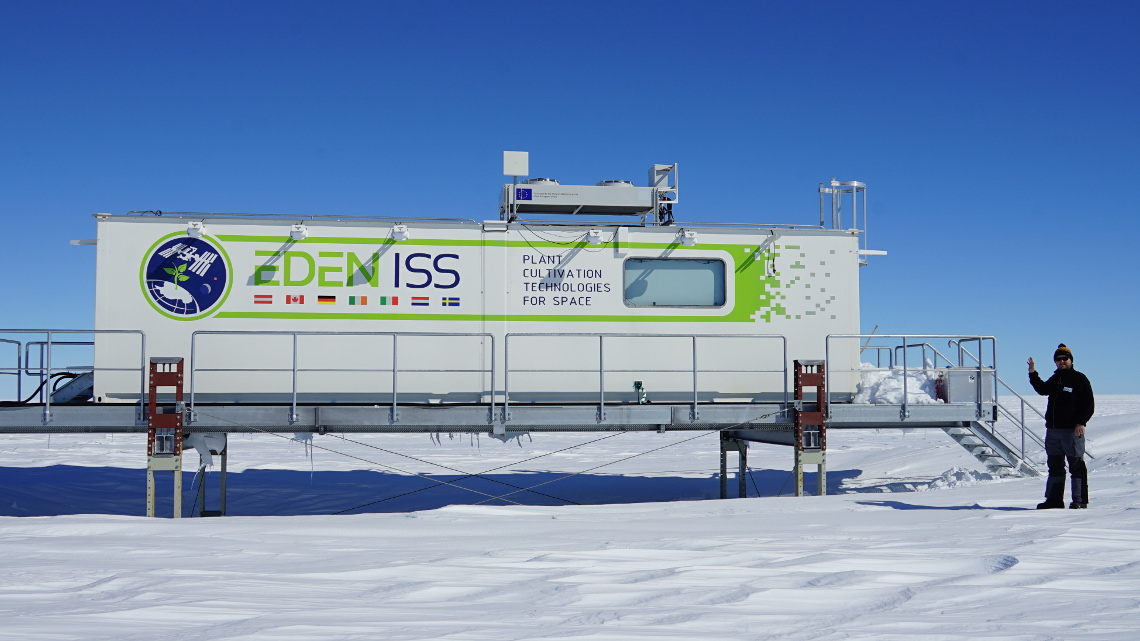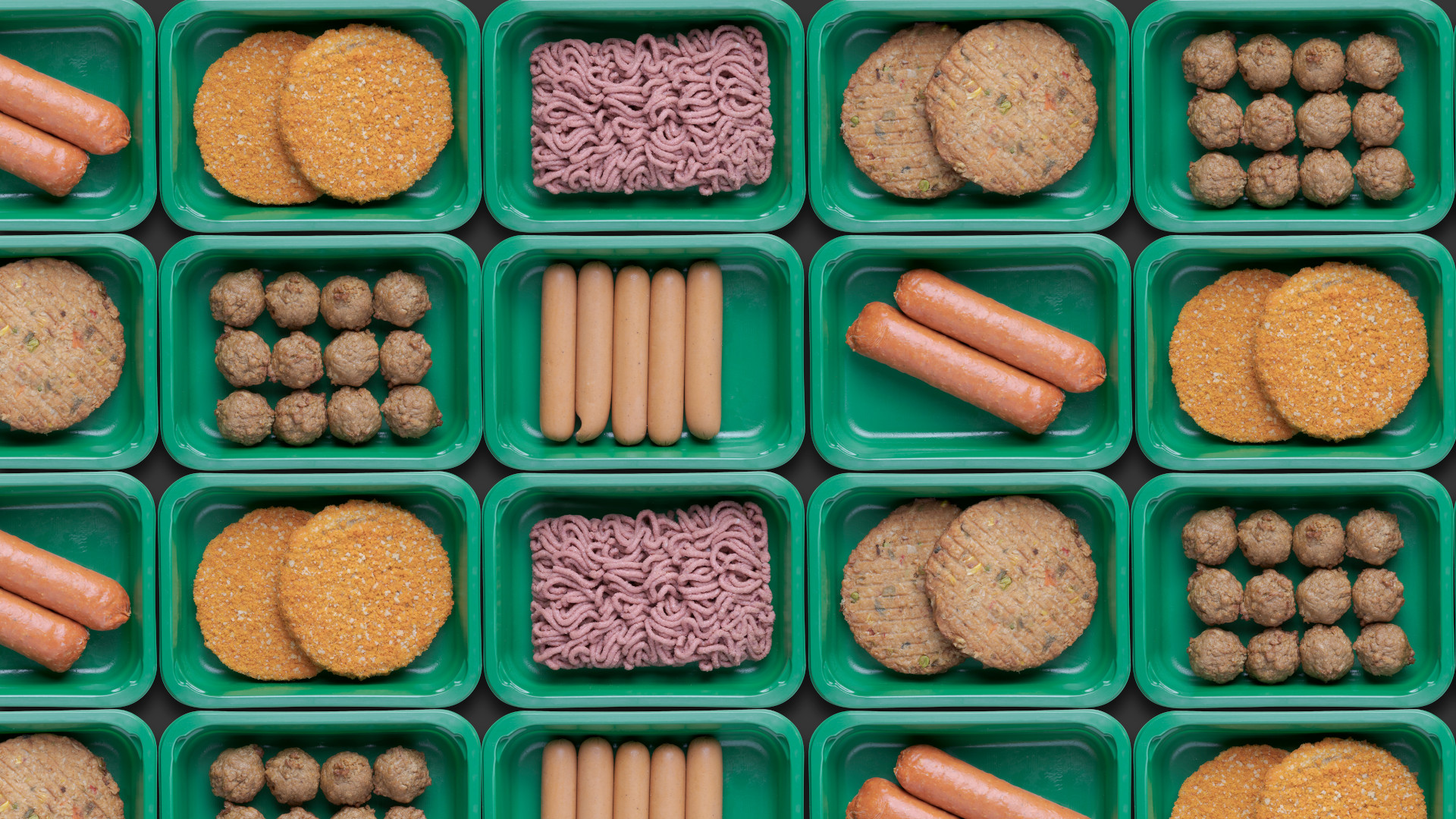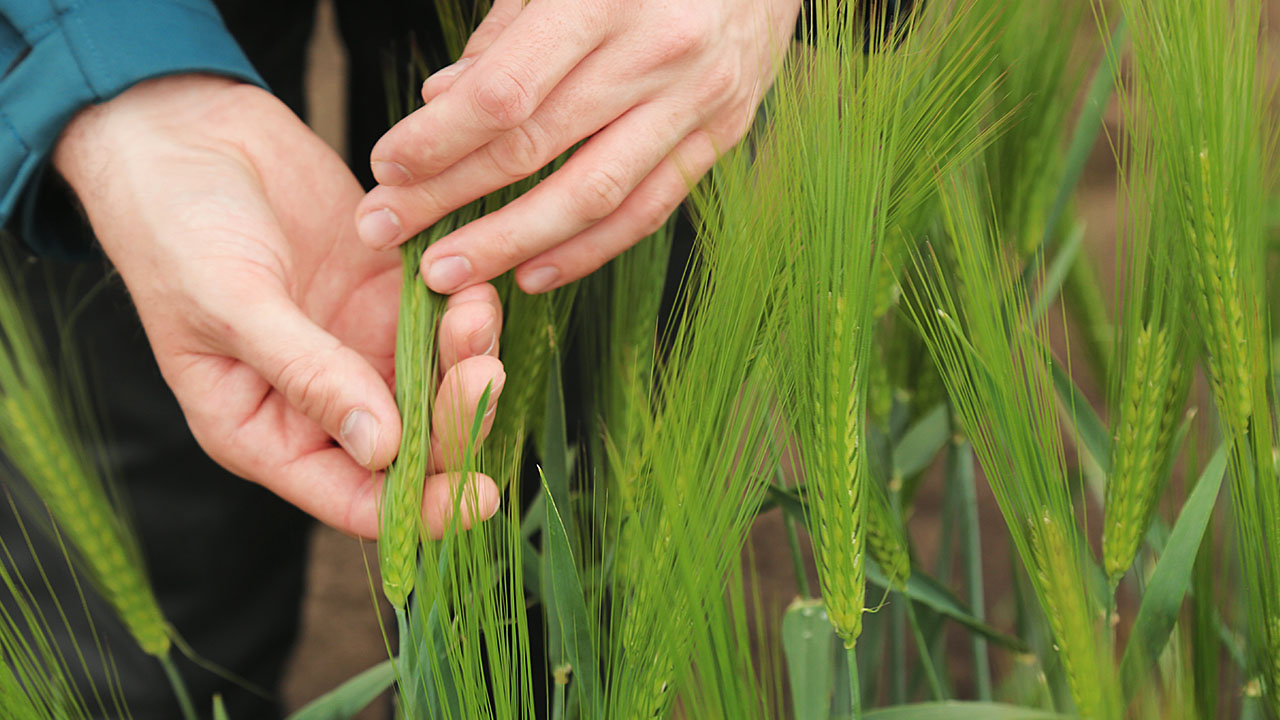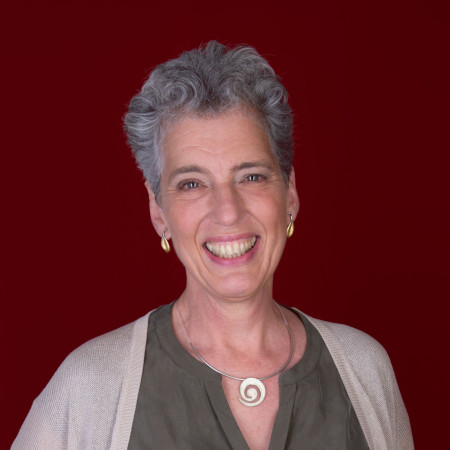Farming vegetables in perpetual ice
After a year of growing vegetables in Antarctica, Paul Zabel has returned to Germany. The results are mostly positive - in total, more than 270 kilograms of vegetables were harvested.

117 kilograms of lettuce, 67 kilograms of cucumbers, 46 kilograms of tomatoes, 19 kilograms of kohlrabi, 15 kilograms of herbs and 8 kilograms of radishes - these are the preliminary results after one year of vegetable farming in perpetual ice. From December 2017 onwards, Paul Zabel of the German Aerospace Center (DLR) had been growing vegetables in the EDEN-ISS greenhouse next to the German Antarctic research station Neumayer III of the Alfred Wegener Institute (AWI). DLR operates the greenhouse to obtain information for future vegetable farming on the Moon and Mars. The project is funded by the European Research Framework Programme Horizon 2020.
Fresh vegetables daily, despite perpetual ice
Almost every day Zabel walked the 400 metres from the Neumayer Station to the EDEN-ISS greenhouse, except for heavy storms, during which the greenhouse was automatically monitored and controlled by the control centre in Bremen. "From Bremen, we were in daily contact with Paul," reports Daniel Schubert, head of EDEN-ISS at the DLR Institute for Space Systems.
The other members of the winter-team at Neumayer Station also supported Paul Zabel in his work. "After more than a year in Antarctica, we can look back on a successful winter. The work in the greenhouse and the fresh vegetables enriched our time at Neumayer Station III," says Station Manager Bernhard Gropp. The evaluation of the studies on plant breeding in Antarctica is still ongoing. The detailed results, which will include technical, botanical, microbiological and psychological analyses, are expected to be completed in May 2019.
Artificial light and nutrient solution for the plants
Of note, in the EDEN-ISS greenhouse the plants do not grow as usual. Rather, the greenhouse is made-up of two converted shipping containers and the conditions inside are completely independent of the external weather conditions. The artificial light is provided by LED lamps and the roots do not grow in soil, but hang in the air and are sprayed regularly with water and nutrients. The entire climate in the greenhouse can be controlled - including temperatures and humidity.
Yet, there have been a few problems during the year in Antarctica. Although the paprika and strawberry plants, for example, have grown well, as Zabel reports on Deutschlandfunk radio, the strawberries had not formed any fruit at all, and the peppers formed only very few. "We'll have to see what exactly this was all about," says Zabel. However, most of the problems were in the technical area, such as system failures or individual components that unexpectedly broke down.
Greenhouse system could be ready for the Moon in ten years
Over the next two years, the DLR, together with AWI and other research partners, will therefore further develop the production processes in the EDEN-ISS greenhouse in order to offer future stations on the Moon and Mars an optimised greenhouse concept. The continuation of the project is open to researchers from all over the world. "Soon we will hand over the greenhouse to the new winter team, who will continue the EDEN-ISS project in Antarctica and take care of plant cultivation," says Schubert.
According to the researchers, the reliability of the systems in particular needs to be improved. After all, when used in space, the farming of vegetables will also be used to produce oxygen - a failure of this system would therefore be life-threatening. Nevertheless, Zabel is optimistic: "I think one could get such a greenhouse up and running for the Moon or Mars within the next ten years."
jmr


